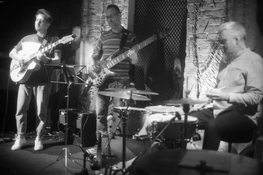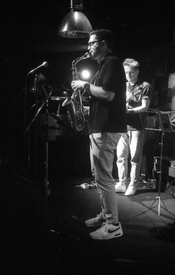Two days ago Lucius posted a couple of photographs here that were shot with Fomapan 400 that showed a very obvious glow around a source of bright light that had bled into and concealed darker portions of his exposure. He found it unusual and wondered what it was. It was described by another member as an example of halation, a common problem that certain Fomapan 135 films appear to be subject to showing if there is a bright light source in the photograph.
At the time this was posted I found the explanation to be odd since I have been using a lot of Fomapan 400 film over the past few years and had not seen examples of halation in my own work that were that severe. So, being the curious sort, I decided to see if I could recreate that same obscuring glow in some of my own photographs. Using my Pentax LX and a Sigma Superwide II 24mm lens I purposely went looking for circumstances that I felt would cause this same sort of halation. The Sigma Superwide II lens is multi-coated but it is subject to flair from very bright light. I did use a hood but since several of these photos will show the sun directly in the frame I doubt the hood was very effective in protecting the lens to reduce flair. The flair can reduce contrast in the photo but, in my experience, it has never out and out obscured details.
The film I am using is relatively fresh Fomapan 400. I bulk load so this roll of film was loaded from a 100 foot roll of Fomapan 400 that has an expiration date of February 2025. I haven't found the can it came in yet so I don't have the Lot #, but if I find it I will post that later. The film was exposed at an exposure index of 800 so some shadow detail will probably be lacking a bit in some of the photos I will be posting. Since we are looking for the bleeding of very bright light sources into dark surrounding of a photo I didn't think that shadow detail was really an issue.
The film was developed in HC110 1:31 for 9 minutes at 68F. This was the recommendation from the Massive Development Chart on DigitalTruth.com. I agitate continuously for one minute and then 3 times every 30 seconds after. This is a bit more agitation than is really necessary but I kind of assumed that it would enhance the appearance of any halation. It was fixed with Ilford Rapid Fixer and hung to dry overnight.
I scanned the negatives this morning using an old Epson V500 flatbed scanner and Epson Scan software using the 16 bit grayscale mode in the Black and White Negative setting. I have not done any sharpening or other post processing beyond what the software my be doing under the hood for a standard scan. No cropping was done but In this case I doubt this will make any significant difference. The scan was processed in Photoshop and resized for the web. No specific sharpening or other post processing was done. I have done no spotting though I did clone a piece of string out of one of the images.
All of these are exposures into bright light sources with darker surroundings at different distances from the light source. You will have to be patient with me as it sometimes takes me a while to get images ready and posted. This first one was one where I definitely expected some halation but, as far as I can tell, it didn't happen. There is a very light glow around the cat's body but, since the ears are pretty well defined and not obscured this actually appears to me to be the reflection of light from the fur, not halation.
More to come.











